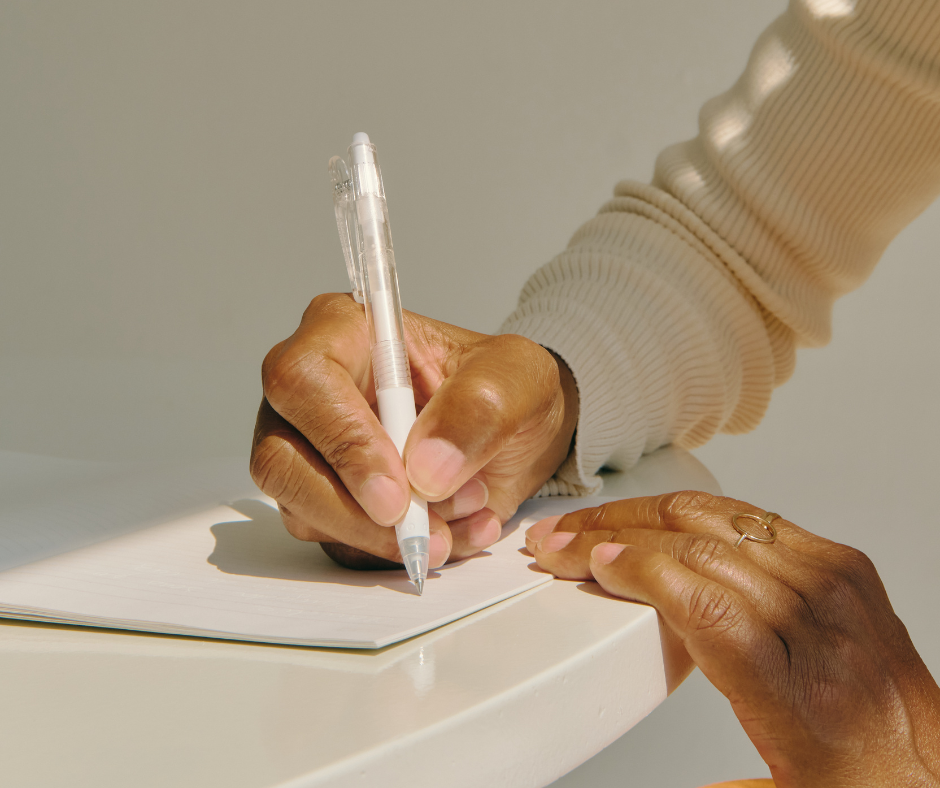Struggling With Self-Acceptance? Here’s 15 Therapist-Approved Ways to Finally Make Peace With Yourself

If you’ve ever looked in the mirror and felt like the person staring back at you wasn’t “enough” — not attractive enough, smart enough, successful enough, likable enough — you’re not alone.
Self-acceptance sounds like such a lovely, Instagram-friendly concept, doesn’t it? “Love yourself,” “embrace who you are,” “you are enough.” But when you’re living with constant self-criticism, perfectionism, or the nagging feeling that you’re falling short, those phrases can feel more like a cruel joke than real advice.
I want to talk to you — the real you who’s been trying to “fix” yourself for years, the you who keeps waiting to feel worthy until you hit a certain milestone, lose a certain amount of weight, or finally stop making mistakes.
Here’s the truth most people don’t say out loud:
Self-acceptance isn’t about liking every single thing about yourself all the time. It’s about making peace with the fact that you’re a whole, complex, imperfect human — and still deserving of love and respect right now, before you change anything.
And yes, it’s possible — even if you’ve been stuck in self-doubt for decades.
Let’s break down 15 therapist-approved strategies for practicing self-acceptance, so you can stop living in a constant mental tug-of-war and start feeling at home in your own skin.

1. Understand What Self-Acceptance Really Means
A lot of people mistake self-acceptance for self-esteem or self-love, but they are not the same thing. Self-esteem is about how much you value yourself, and self-love is about treating yourself with kindness and compassion. Self-acceptance is the bedrock under both — it’s the choice to acknowledge all of who you are, even the parts you might prefer were different. That means accepting your strengths and talents alongside your insecurities, regrets, and imperfections.
Think of it this way: you don’t have to love rainy days, but you can accept that they’re part of the weather cycle. Similarly, you don’t have to like every part of yourself to stop fighting your own reality.
Therapist insight: Self-acceptance isn’t resignation. It doesn’t mean you’ll never grow or change — it means you stop holding your worth hostage until you become “better.”
Try this: Write a list of 10 things about yourself — 5 that you feel proud of and 5 that you find challenging — and say out loud, “I accept that these are part of who I am right now.” It’s a small but powerful shift toward embracing your whole self.

2. Notice Your Inner Critic’s Voice
If you’ve lived with self-criticism for a long time, it can feel like background noise — constant, familiar, and unnoticed. The first step to loosening its grip is noticing it in real time.
Instead of automatically thinking, I’m such an idiot for saying that, pause and label it: Oh, that’s my inner critic talking again. This creates separation between you and the thought, making it easier to challenge.
Therapist tip: Give your inner critic a funny or over-the-top name, like “The Drama Queen,” “Captain Doom,” or “Judge Judy.” When you catch it speaking up, you can respond with, “Thanks for your input, Drama Queen, but I’ve got this.”
Practice: Keep a log of the top 5 things your inner critic says most often. For each one, write a compassionate counterstatement you can use instead.
3. Stop Waiting Until You’re “Fixed” to Live Fully
Many people fall into the trap of believing they can only feel confident, happy, or worthy after they lose weight, get a promotion, start dating, or finally “have their life together.” But this thinking delays your life indefinitely.
Self-acceptance means allowing yourself to participate fully in life now, even while you work toward goals. It’s the difference between saying, “I’ll go to the beach when I have a six-pack,” and saying, “My body is worthy of joy and sunlight right now.”
Therapist reframe: Worthiness isn’t a reward for perfection — it’s your birthright.
Try this: Identify one thing you’ve been putting off “until you’re ready” and do it this week. Wear the dress. Sign up for the class. Take the trip.
4. Practice Talking to Yourself Like You Would to a Friend
Imagine your best friend called you in tears, convinced they were a failure. You’d probably listen, reassure them, and remind them of their worth. But when it’s you, the language changes — suddenly you’re harsh, impatient, and unkind.
Therapist insight: We often have a double standard — one set of rules for others, and a much harsher one for ourselves. Closing that gap is key to self-acceptance.
Exercise: Write down the top three negative things you’ve said to yourself this week. Then rewrite them as if you were speaking to a loved one. Practice reading these revised statements out loud.

5. Stop Comparing Your Behind-the-Scenes to Other People’s Highlights
Comparison is one of the fastest ways to erode self-acceptance. Social media makes it even easier to compare your messy, unfiltered reality to someone else’s polished highlight reel.
Therapist insight: When you compare, you’re often looking at someone’s best moments against your worst moments — it’s not a fair comparison.
Try this: When you feel the pull to compare, ask, “What’s one thing in my own life that I’m grateful for right now?” Shifting attention back to your own lane helps you anchor in reality instead of fantasy.
6. Redefine What “Enough” Means
If your definition of “enough” is always shifting upward, you’ll never feel satisfied. High standards aren’t bad — but impossible standards are a recipe for chronic dissatisfaction.
Example: Instead of deciding a “good friend” is someone who never forgets a birthday and always answers texts within minutes, redefine it as “someone who shows up when it matters and cares deeply.”
Therapist tip: Write down your definition of “enough” in key areas of life (work, relationships, appearance). Then ask: Are these standards kind, realistic, and human?
7. Make Peace With Your Past Mistakes
Self-acceptance requires letting go of the shame you carry from past actions. This doesn’t mean pretending nothing happened — it means acknowledging that you did the best you could with the awareness and tools you had at the time.
Therapist exercise: Write a letter to your younger self from the perspective of compassion. Acknowledge their struggles, thank them for surviving, and offer understanding instead of judgment.

8. Surround Yourself With People Who Reflect Acceptance Back to You
The people around you can either reinforce self-criticism or encourage self-acceptance. If you’re surrounded by judgment, sarcasm, or constant criticism, it’s like trying to grow a plant without sunlight.
Therapist insight: Seek relationships where you can be your unfiltered self without fear of ridicule. This doesn’t mean cutting everyone out, but it might mean setting boundaries or spending less time in toxic dynamics.
9. Learn to Sit With Discomfort
Even when you accept yourself, you’ll still have moments of self-doubt or insecurity. The difference is that you stop letting those feelings dictate your behavior.
Example: “I’m nervous I sounded awkward in that meeting — and that’s okay. I don’t need to replay it all day to prove something.”
Therapist tip: Use grounding techniques — like deep breathing, noticing five things you can see, or pressing your feet into the floor — to stay present when uncomfortable feelings arise.
10. Break the Habit of All-or-Nothing Thinking
Self-acceptance doesn’t mean you’ll either love everything about yourself or hate everything. It’s a spectrum. You can feel confident about your creativity while still wanting to improve your time management.
Therapist tip: Replace “I’m terrible at this” with “This is something I’m working on.” That small shift makes growth possible without tearing yourself down.

11. Keep a Self-Acceptance Journal
Journaling helps your brain notice what’s going right, not just what’s going wrong. Each day, write one thing you appreciate about yourself. Over weeks and months, this creates a record you can look back on when your inner critic is loud.
Example entries:
- “I asked for help when I needed it.”
- “I cooked myself a healthy meal.”
- “I spoke kindly to myself in the mirror today.”
12. Practice Mindfulness Without Judgment
Mindfulness teaches you to notice thoughts and feelings without rushing to label them as good or bad. This pause creates space between the feeling and your reaction, making it easier to respond with acceptance.
Therapist tip: Try a 3-minute daily practice of simply sitting, breathing, and noticing sensations. When a judgmental thought comes up (“I’m terrible at meditating”), treat it like a passing cloud and bring your attention back to the breath.
13. Challenge Old Stories About Who You Are
Many of our self-criticisms are actually hand-me-downs from other people — parents, teachers, or peers who labeled us in ways that stuck.
Therapist exercise: Identify one old label you’ve been carrying (“lazy,” “too sensitive”) and gather evidence against it. Notice times in your life when the opposite was true.
14. Celebrate Small Wins
Self-acceptance grows through evidence. Every time you take care of yourself, set a boundary, or follow through on a goal, acknowledge it.
Therapist tip: Keep a “done list” alongside your to-do list. At the end of each day, write down things you accomplished, no matter how small.
15. Get Professional Support
Self-acceptance can be hard to cultivate on your own — especially if self-criticism has been your default for years. A therapist can help you untangle where those patterns began and teach you tools to relate to yourself with more compassion.

At KMA Therapy, we know self-acceptance isn’t just a feel-good slogan — it’s a deeply personal journey that can be messy, emotional, and transformative. Whether you’re battling perfectionism, struggling with self-esteem, or simply tired of feeling “not enough,” we’re here to walk alongside you.
Our team of compassionate therapists blends evidence-based techniques with a warm, judgment-free approach to help you break free from self-criticism and start building a relationship with yourself that feels safe, kind, and real.
You deserve to feel at home in your own skin — and you don’t have to figure it out alone.
Try This: A Guided Self-Acceptance Meditation
Even with all the practical tips in the world, self-acceptance isn’t just an idea — it’s a practice. You can read about it, talk about it, even agree with it in theory, but your mind and body need to actually experience it.
That’s where this short meditation comes in.
It’s not about forcing yourself to “feel amazing” or “love everything about yourself” in five minutes — that’s not realistic.
Instead, it’s about giving your brain a small, gentle moment of connection and permission to simply be as you are right now.
Think of it as a reset button for self-judgment.
When you notice you’re being extra hard on yourself, spiraling in comparison, or feeling like you’re never enough, this is something you can come back to. Over time, practicing it regularly can help your nervous system get used to the idea that you don’t have to fight yourself all the time.
Set aside about five minutes where you won’t be interrupted.
You can do it sitting, lying down, or even in your parked car before heading inside after a long day.
The goal is not perfection — it’s presence.
Self-Acceptance Meditation Script
Find a comfortable position — sitting upright with your feet on the ground or lying down in a way that feels supportive.
Close your eyes if that feels safe, or simply soften your gaze.
Take a slow, deep breath in through your nose… hold it for a moment… and gently exhale through your mouth.
Feel your body start to settle.
Notice the surface beneath you supporting your weight.
Let your shoulders drop away from your ears.
Allow your jaw to unclench.
Feel the gentle rise and fall of your chest.
Now, bring your attention to your breath.
You don’t need to change it — simply notice it moving in… and moving out.
With each exhale, imagine releasing tension, judgment, and the need to “fix” yourself in this moment.
As you breathe, bring to mind an image of yourself — not your perfect, future self, but you right now.
The you with strengths and flaws, confidence and doubt, joy and pain.
Silently repeat to yourself:
“I accept myself as I am in this moment.”
If resistance comes up, that’s okay.
Notice it with kindness — as you would a friend — and gently return to the words:
“I accept myself as I am in this moment.”
Place a hand on your heart.
Feel its steady rhythm — the quiet reminder that you are alive, here, and worthy of care.
Say to yourself:
- “I am allowed to be a work in progress.”
- “I can grow without hating where I am.”
- “I am more than my mistakes, my labels, or my insecurities.”
Imagine a warm light surrounding you — soft, steady, and accepting.
It doesn’t demand you to be different.
It simply holds you exactly as you are.
Let yourself rest in that light for a few breaths.
When you’re ready, take one final deep breath in…
and slowly exhale, releasing any last bit of tension.
Gently wiggle your fingers and toes.
Open your eyes or lift your gaze.
Carry this sense of acceptance with you into the rest of your day — knowing that, no matter what, you can return to this place of stillness and self-compassion at any time.
💬 Book your free 15-minute discovery call today






